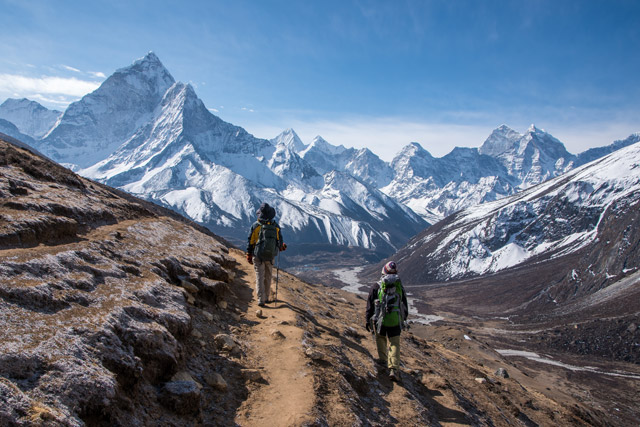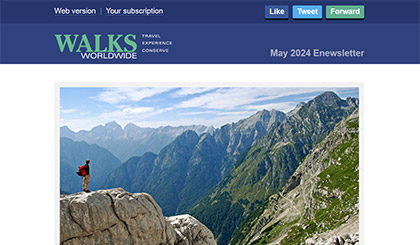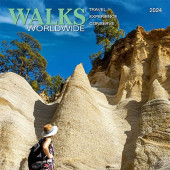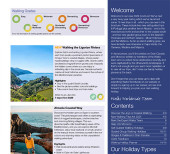The higher you climb, the more serious the associated risks become. Unfortunately, there are no specific factors that contribute to someone developing altitude sickness and acute mountain sickness – it doesn’t discriminate according to age, sex or physical fitness. Someone who has previously suffered is no more likely to suffer in the future. Knowing that these risks exist, you should do what you can to minimise any other dangers and train to become as fit as you can in the time before your high altitude trek.
Follow these preparation tips for your high altitude trek and you will enjoy it even more, giving you more time to concentrate on your breathtaking surroundings and not the breathtaking air.

 Check with a doctor
Check with a doctor
Speak to your doctor before you start a new training regime to ensure you have no pre-existing conditions that will stop you from walking at high altitude. If you’ve got the all clear, let’s begin.
Aerobic training
Your preparation should include a good amount of cardio at a sustained level to improve your aerobic fitness. Many swear by interval training to improve cardiovascular ability, but you should ensure you will also be able to maintain a steady pace for the number of hours you will have to walk each day.
Aerobic activities, such as running, biking and swimming will improve your VO2 max – the maximum volume of oxygen that your body can use. This is important for a high altitude trek as there will be less oxygen in the air for you to consume and each breath has to count. Make sure to include hill training for whatever form of cardio you choose.
Slowly increase the distance and altitude of any training treks
Although it may be hard to increase the altitude of your training treks (especially if you are training in Great Britain), you should increase the distance and time you walk as you train. Start off slow and build up to walking around an hour less than you will be expected on the longest walking day of your trip. Do your longest training walk at least a couple of weeks before you begin your high altitude trek, to give yourself enough time to recover.
Learn yoga breathing rhythms
At high altitude you may find yourself breathless after just a small burst of exertion. A good way of getting your breathing back under control is to practice yogic breathing. Even getting used to breathing in a rhythm, taking deep, abdominal breaths, can help. The more you understand about how to get in under control, the less panicked you may feel on the trek if it does happen.
Get used to drinking a large amount of water
At altitude you should be drinking water more frequently than you would normally, no matter what activity you are undertaking. Humidity is lower at higher altitudes, which means that sweat evaporates quickly and often without you noticing. Lower oxygen levels also make you breathe in and out faster, so you lose more water through respiration – sometimes twice as fast than at sea level. Another effect of altitude sickness is the need to urinate more. All this means you need to drink much more as dehydration can mask or worsen the symptoms of altitude sickness.

 Insurance
Insurance
It's important to check your travel insurance will cover you for the altitude you will be walking at. This doesn't always come as standard. Check the trip dossier to see your maximum altitude.
Spend time acclimatising
If you are ascending rapidly to a starting point that is at altitude (driving or flying) you should spend a couple of days at your destination doing very little. Don't over exert yourself and get used to moving at altitude. Doing this will greatly improve your condition on the trek.
Try local remedies
Part of the experience of your high altitude trek will be trying the local measures to combat the altitude (alongside your careful preparation). In the Andes they chew coca leaves and drink coca tea and in the Himalayas they eat chhurpi, a dried yak cheese.
Altitude Sickness and Acute Mountain Sickness
Many people experience symptoms of altitude sickness and in its milder forms it can cause breathlessness, headaches and nosebleeds. Much more serious are the symptoms such as a cough, persistent severe headaches, nausea, loss of coordination and disorientation. You should tell your guide at any point if you feel unwell. The only measure to stop the sickness progressing is to stop at your current altitude and you may need to descend if the symptoms don't improve over a day.










